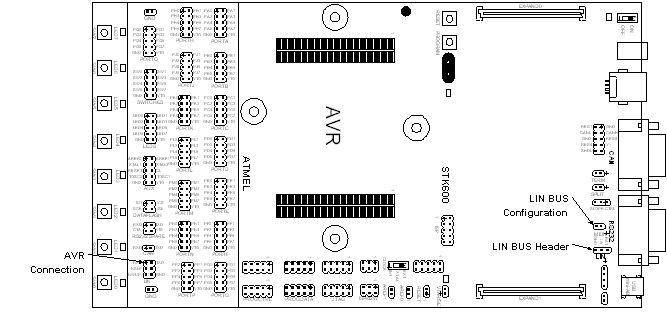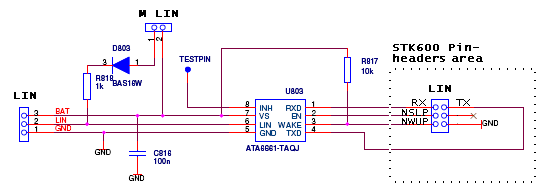6.13 LIN Transceiver
Local Interconnect Network (LIN) is a broadcast serial network comprising one master and many (up to 16) slaves. The LIN bus is typically used in the automotive industry as a smaller and less expensive sub-network of a CAN bus to integrate intelligent sensor devices or actuators.
STK600 features the ATA6661 LIN transceiver. A 3-pin header serves to connect to the bus. With the ATA6661, an AVR device on the STK600 can implement a LIN master or a LIN slave.

The ̔M LINʼ jumper provides the master node pull-up, required if the application running on STK600 is the LIN bus master.
The 3-pin LIN connector must provide V-battery (̔BATʼ) 12V>BAT>5V, and GND. ̔BATʼ must be supplied from an external source. For further reference, see the ATA6661 data sheet.
The LIN transceiver is connected to the MCU through the 6-pin ̔LINʼ header near the switches on STK600. The target MCU will usually implement the LIN protocol in software through a USART interface. The ̔NSLPʼ pin must be actively driven high to keep the ATA6661 from a sleep mode.

